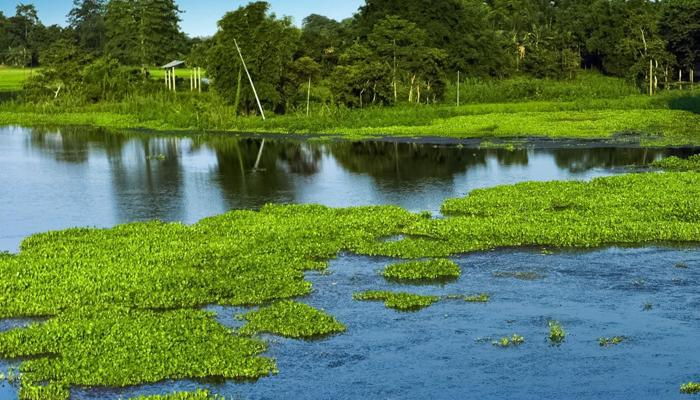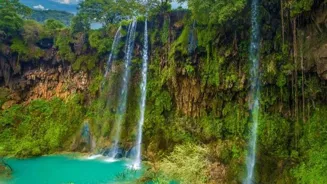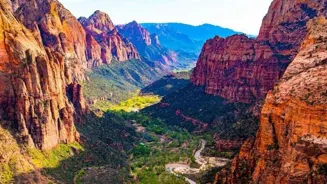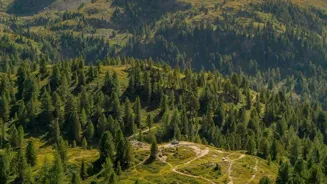Discover the hidden gems of India - its wetlands, a haven for migratory birds! Learn about their importance and beauty
India, a land of diverse landscapes and vibrant cultures, boasts a natural treasure
that often goes unnoticed – its wetlands.
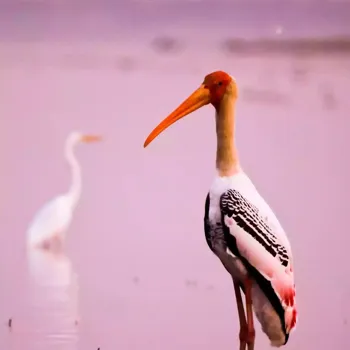
These unique ecosystems, ranging from sprawling lakes and marshes to coastal lagoons and mangrove forests, play a crucial role in supporting a rich biodiversity, most notably serving as vital havens for migratory birds travelling thousands of kilometres.
Annually, as winter grips their breeding grounds in the northern hemisphere, millions of birds seek refuge in the warmer climates and abundant food sources offered by Indian wetlands.
This incredible avian migration is a spectacle of nature, painting the skies with fluttering wings and filling the air with enchanting calls.
Wetlands: vital for flood control, water purification, carbon storage, livelihoods
The importance of these wetlands extends far beyond their aesthetic appeal. They act as natural sponges, absorbing excess rainfall and reducing the risk of floods, a vital service in a country often plagued by monsoon-related disasters.
They also purify water by filtering out pollutants and sediments, ensuring cleaner water resources for both humans and wildlife. Moreover, wetlands are crucial carbon sinks, absorbing and storing atmospheric carbon dioxide, which helps mitigate climate change impacts.
The local communities that reside around these ecosystems also heavily depend on them for their livelihood.
Indian wetlands: vital ecosystems for diverse life and migratory birds
These wetlands are not just water bodies; they are complex ecosystems brimming with life and various unique species. The migratory birds, some from as far away as Siberia and Europe, find not only temporary homes but also sustenance. Their presence also contributes to the larger environment.
The wetlands support a variety of fish and plant life, which the local communities often depend on. This symbiotic relationship between humans, nature and the migratory birds highlights the importance to conserve the Indian wetlands.
India's Ramsar sites attract migratory birds like Siberian cranes
India is home to several internationally recognized Ramsar sites, wetlands of international importance, which serve as key migratory bird destinations. The Keoladeo National Park in Rajasthan, also known as Bharatpur Bird Sanctuary, is a prime example.
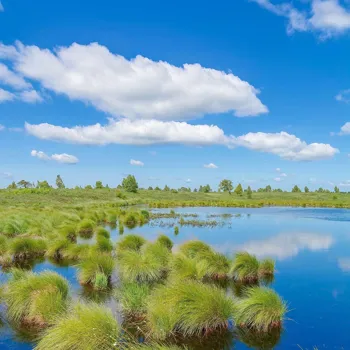
This man-made wetland attracts a vast array of waterfowl, including the Siberian crane, ducks, geese, and waders. Chilika Lake in Odisha, Asia's largest brackish water lagoon, is another crucial stopover for migratory birds along the Central Asian Flyway.
Thousands of flamingos, pelicans, and other waterbirds congregate here during the winter months.
India's wetlands support diverse migratory bird populations
Similarly, the Pulicat Lake Bird Sanctuary, straddling the states of Andhra Pradesh and Tamil Nadu, provides a haven for flamingos, pelicans, and various other shorebirds.
The Rann of Kutch in Gujarat, a vast salt marsh, also attracts a large number of migratory birds, including greater and lesser flamingos, cranes, and raptors. These are but a few examples of the many wetlands scattered across India that play a critical role in supporting migratory bird populations.
The diversity of habitats within these wetlands caters to different species, making India a truly indispensable refuge for these long-distance travellers.
Bird migration in India benefits ecosystems through droppings and pollination
The sheer volume of birds arriving in India each year paints a fascinating picture of nature’s cyclical patterns. The birds bring with them a host of ecological advantages. Their droppings contribute to nutrients in the wetlands, also helping the vegetation in and around the water bodies to grow.
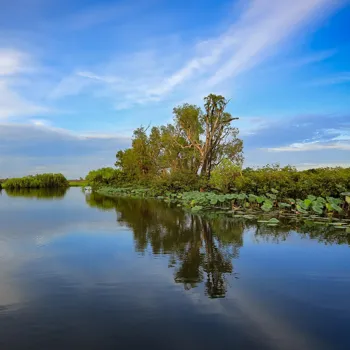
The different species can also contribute in plant pollination; the birds carry pollen from one plant to another. This is especially useful when wind or insects are not available to assist the flora.
India's wetlands threatened by encroachment, pollution, climate change; urgent policy action needed
Despite their ecological and economic significance, many of India's wetlands face numerous threats. Encroachment for agriculture and urbanization, pollution from industrial and domestic waste, and unsustainable fishing practices degrade water quality and destroy critical habitats.
Climate change, with its associated sea-level rise and altered rainfall patterns, further exacerbates these challenges.
It's important for policy makers to create effective schemes to regulate industries around these areas and to promote the use of environmental friendly products for the locals to secure the environment.
Indian government prioritizes wetland conservation efforts
Recognizing the importance of wetland conservation, the Indian government has implemented various initiatives over the years. The National Wetlands Conservation Programme aims to conserve and manage wetlands through regulatory measures, awareness campaigns, and community participation.
Many state governments have also established wetland authorities and implemented site-specific management plans. International collaborations, such as the Ramsar Convention, play a crucial role in promoting wetland conservation on a global scale.
Empowering communities for wetland conservation through ecotourism and education
The involvement of local communities is also paramount. Empowering communities to participate in wetland management and providing alternative livelihood options can reduce dependence on unsustainable practices.
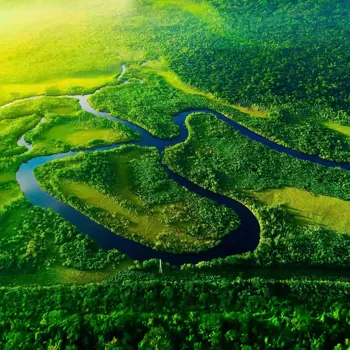
Ecotourism initiatives, promoting responsible tourism that benefits both local communities and the environment, can also contribute to wetland conservation.
Conservation also needs to be understood by the society itself and promoted at a local level with active participation from adults and educational programmes for the kids too, for creating awareness amongst the younger generations.
India's wetlands and migratory birds face grave threats, necessitating collective conservation efforts
The beauty of India's wetlands and the spectacle of migratory birds are a testament to the country's rich natural heritage. But without sustained conservation efforts, these incredible ecosystems and the avian visitors they support are under grave threat.
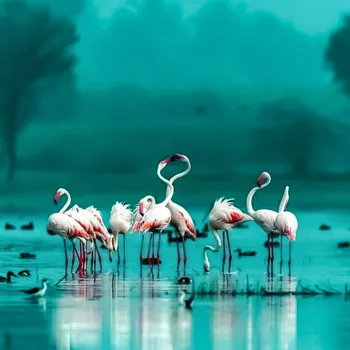
Only through collective action, involving governments, local communities, and individuals, can we ensure the long-term health and resilience of these vital habitats.
Let us commit to protecting India's wetlands, not just for the migratory birds that grace our skies each year, but for the countless benefits they provide to our environment and our communities. By preserving these natural wonders, we are safeguarding a legacy for future generations.
AI Generated Content. Glance/InMobi shall have no liability for the content